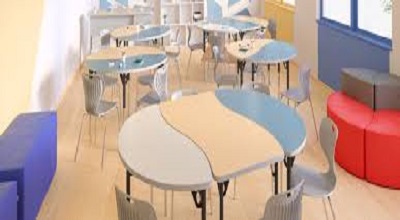The Dynamic Classroom
The Dynamic Classroom: As an educator, have you ever walked into your classroom only to find that the desks, chairs, and tables seem to have a life of their own? If your classroom furniture never stays in place for long, you’re not alone. Many teachers experience this phenomenon, and there are several reasons behind it—ranging from student behavior to innovative teaching strategies.
In this in-depth blog post, we’ll explore why classroom furniture is always on the move, the benefits of flexible seating arrangements, and how you can optimize your classroom setup for better engagement and learning outcomes.
The Science Behind Moving Classroom Furniture
How Movement Affects Learning?
Research shows that movement in the classroom can enhance cognitive function and memory retention. When students are allowed to shift seating arrangements, they engage more actively with the material.
The Psychology of Classroom Layouts
Traditional rows of desks may work for lectures, but modern education emphasizes collaboration. Flexible seating allows students to choose environments that best suit their learning styles.
Common Reasons Why Classroom Furniture Moves
Student-Centered Learning
Many educators adopt student-centered approaches, where learners take ownership of their space. This often means rearranging desks for discussions, presentations, or group projects.
Collaborative Group Work
Team-based activities require different setups—circle formations, clusters, or even standing meetings. Furniture must adapt to these changing needs.
Active Learning Strategies
From debates to hands-on experiments, active learning demands a dynamic classroom. Teachers frequently shift furniture to accommodate different teaching methods.
The Benefits of Flexible Seating Arrangements
Increased Student Engagement
When students have a say in their seating, they feel more invested in their learning environment.
Improved Collaboration
Flexible setups encourage peer interaction, fostering teamwork and communication skills.
Enhanced Comfort and Focus
Alternative seating options (like bean bags or standing desks) can improve posture and concentration.
Challenges of Constantly Moving Furniture
Noise and Distractions
Frequent rearrangements can lead to disruptions if not managed properly.
Wear and Tear on Furniture
Lightweight, mobile furniture may not always be durable.
Classroom Management Issues
Teachers must establish clear protocols to prevent chaos during transitions.
Best Practices for Managing Flexible Classroom Setups
Establishing Clear Rules
Set expectations for how and when furniture can be moved.
Using Furniture That’s Easy to Move
Invest in lightweight, stackable, or wheeled options.
Incorporating Movement into Lesson Plans
Design activities that naturally require seating changes.
Innovative Classroom Furniture Solutions
Lightweight and Modular Desks
Options like flip-top tables or nesting chairs save space.
Mobile Whiteboards and Storage
Portable teaching tools allow for quick room reconfigurations.
Standing Desks and Wobble Chairs
These promote movement while keeping students focused.
Real Teacher Experiences
Case Study 1: The Flipped Classroom
One high school teacher shares how flexible seating supports self-paced learning.
Case Study 2: Project-Based Learning Environments
An elementary teacher explains how furniture mobility enhances creativity.
Future Trends in Classroom Design
The Rise of Agile Learning Spaces
Schools are adopting adaptable layouts to support diverse teaching methods.
Technology-Integrated Furniture
Smart desks with charging stations and interactive surfaces are on the horizon.
Conclusion: Embracing the Dynamic Classroom
A classroom where furniture never stays still is often a sign of an engaged, student-centered learning environment. By embracing flexibility, teachers can create spaces that foster creativity, collaboration, and active participation.
